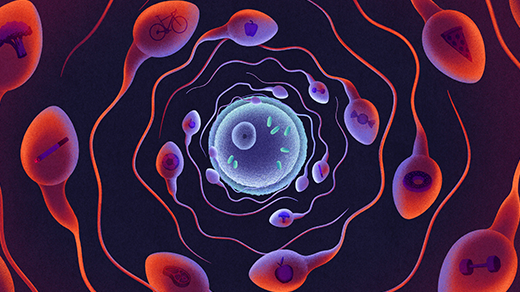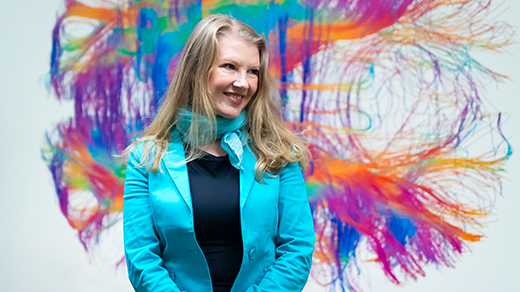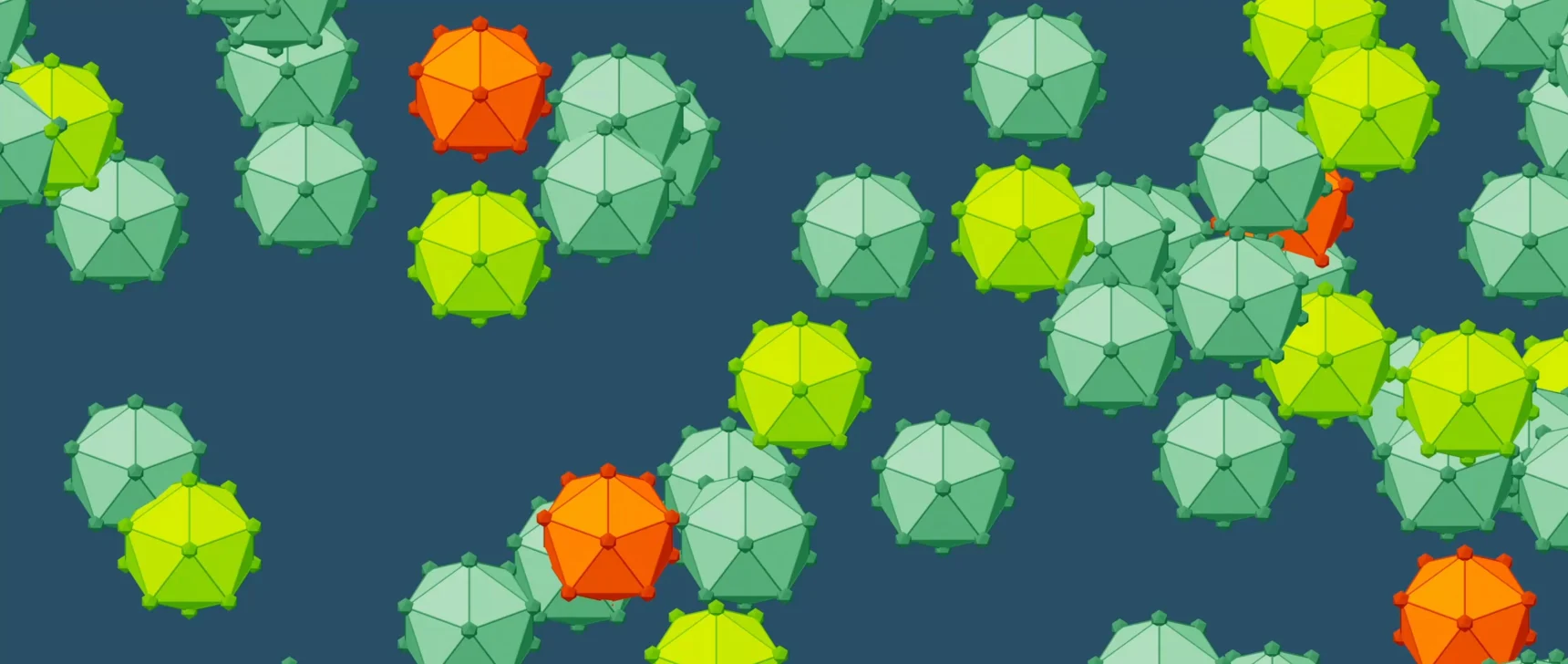The Pursuit of Life Where It Seems Unimaginable
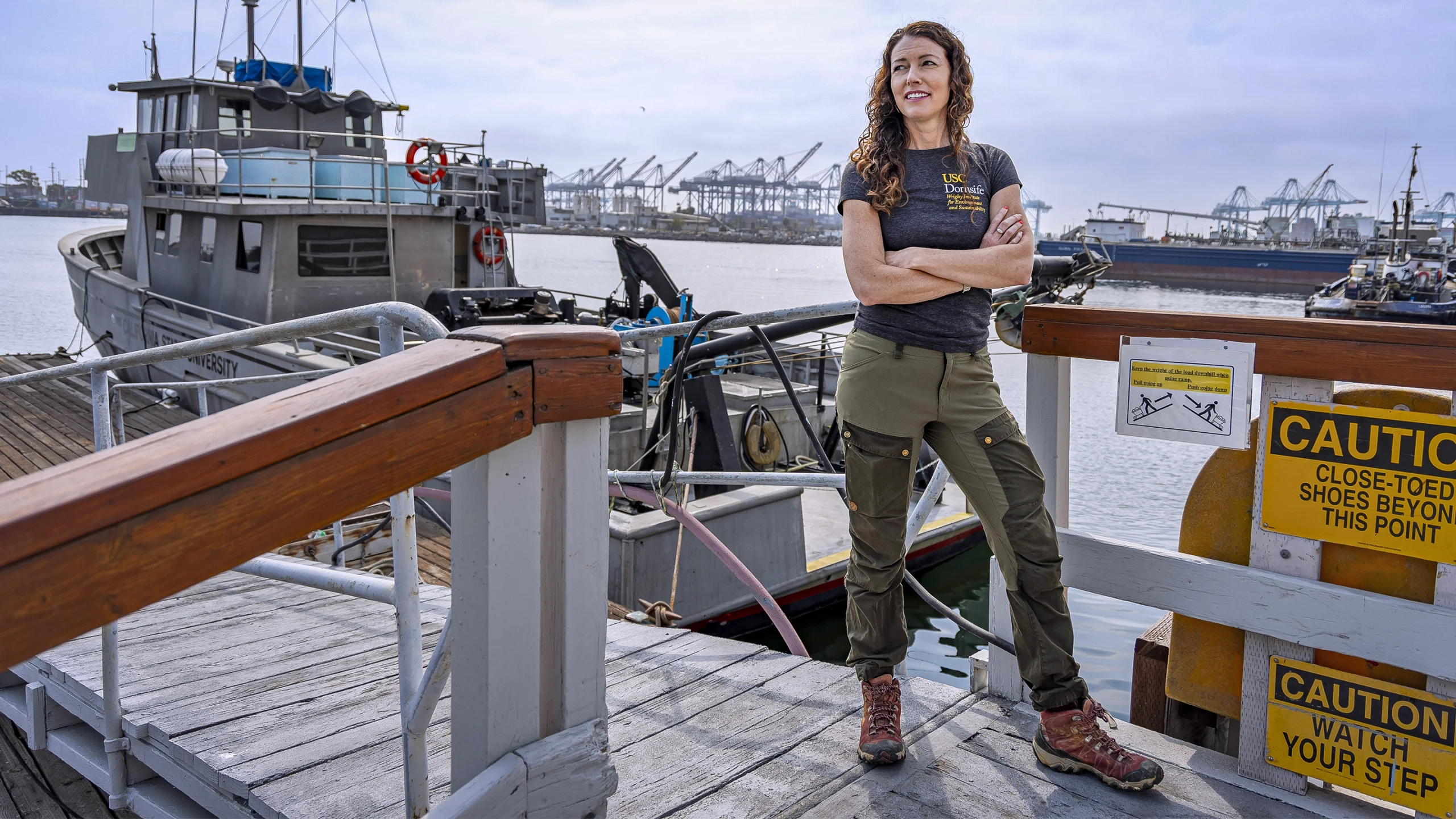
Karen Lloyd seeks the unseen living world in extremophiles, such as cells that live deep in the Earth’s crust and whose lifetimes may extend across geologic timescales.
Monica Almeida for Quanta Magazine
Introduction
When she was a kid, Karen Lloyd enjoyed mucking around along estuaries and beaches on the coast of North Carolina where she lived. With net in hand, the future microbial geochemist dredged up seaweed and mud squirming with snails, crab larvae and other small invertebrates. To the young Lloyd, these were marvelous hidden worlds, out of sight but no less interesting than fish and whales. These childhood experiences made an impression, instilling in her a belief that there is “a lot more to reality than we can see with our eyes,” she said.
She has since built her career around this belief. Using tools from bioinformatics and geochemistry, Lloyd, now at the University of Southern California, makes organisms visible that are doubly beyond our view — in terms of their microscopic size and their hard-to-reach locations. She studies single-celled microbes that manage to survive in rock 5 kilometers or more below the Earth’s surface, where they live impossibly far from sunlight and oxygen, and push the boundaries of life’s relationship with time and energy.
Until the 1980s, these subsurface ecosystems were unknown to science; Earth’s crust was considered lifeless. Then, after microbiologists cultured cells from aquifer sediments located 30 meters beneath the surface, the race was on to find microbes in more extreme, unexpected habitats. But it would take several decades to begin identifying these organisms using their DNA. In 2013, taking advantage of advances in DNA sequencing, Lloyd’s team published the first whole-genome sequences of microbial cells living in marine sediments beneath the seafloor in Aarhus Bay, Denmark. The trailblazing study revealed that those sediments teemed with microbes that sit deep on the branches of the tree of life and feed by slowly degrading bits of protein buried in the sediment. This was a previously unknown feeding mechanism for archaea, a branch of single-celled organisms separate from bacteria.
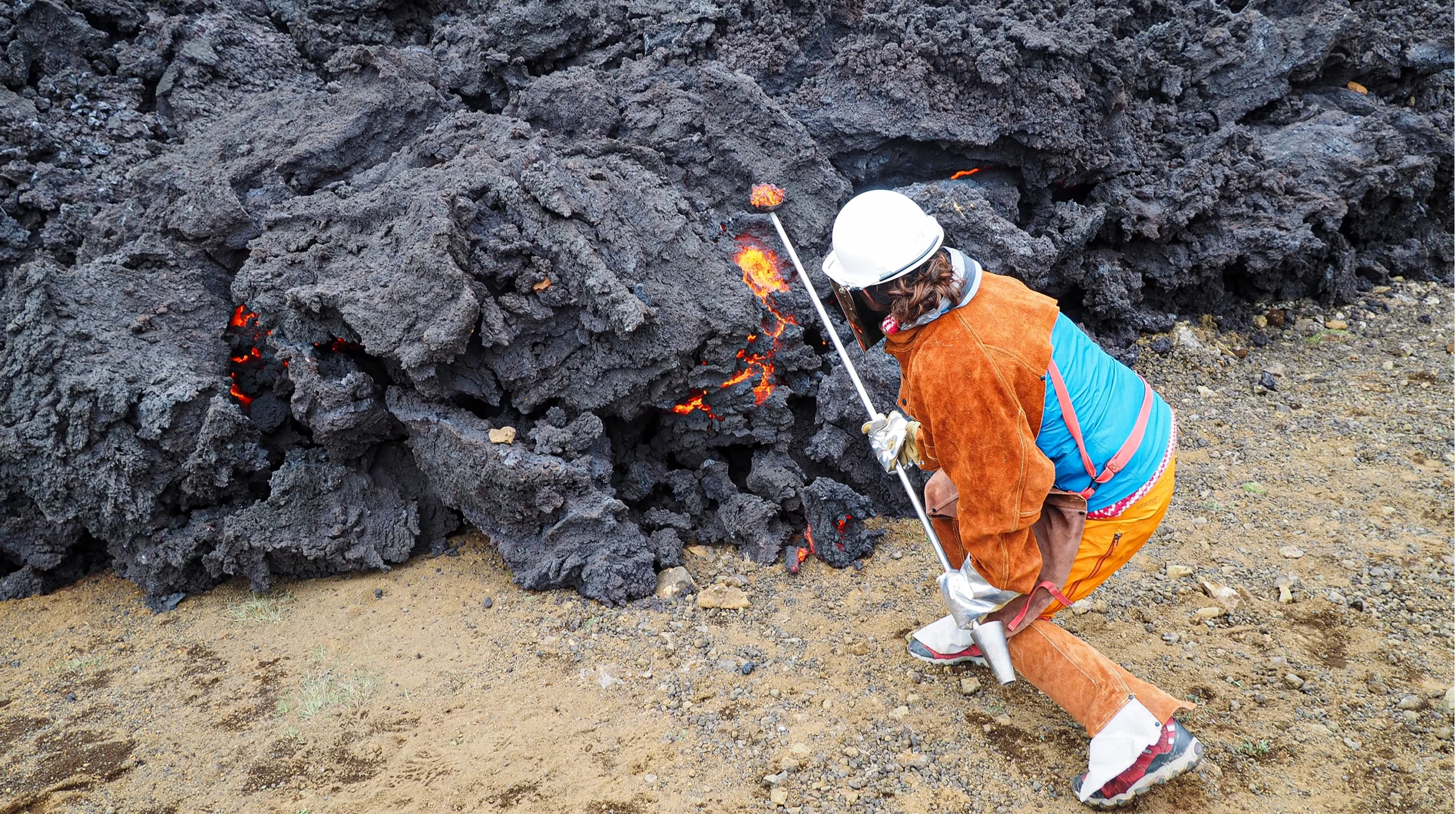
Lloyd pulls lava from the fresh flow from Fagradalsfjall volcano in June 2021. As far as she knows, there are no living things in molten lava; she was there to study how extremophiles in the surrounding hot springs were affected by the new volcano.
Peter Barry
The scientific community has now accepted that bacteria and archaea thrive in the subsurface, representing a massive biome that collectively outweighs more than 200 million blue whales, according to Lloyd’s calculations. In the decade since their discovery, she and her colleagues have sifted through more genomic data and conducted laboratory experiments on the cells. Their findings have expanded their perception of life’s metabolic limits. From the ability to “breathe” rocks to possibly living for hundreds of thousands or even millions of years, these subsurface microbes — known as “intraterrestrials” for their ability to survive within the planet — have forced Lloyd to evolve her own understanding of biology’s universal laws.
While an organism that lives for millions of years may sound extraordinary to us, these ultra-long-lived microbes may actually be quite ordinary on Earth. In a recent comment in Nature Microbiology, Lloyd and her fellow USC microbiologist Andrew Steen advocated for naming these long-lived subsurface microbes “aeonophiles” in reference to their love of eons, or immeasurable lengths of time. Beyond expanding our perceptions of reality, these microbes may also offer more practical applications. The enzymes that stabilize these cells underground for millennia may be able to stabilize other types of materials, such as medicines in transit to remote areas, Lloyd suggested. Thousands of gene sequences with potential candidates for this type of practical application now exist in the public domain thanks to the work of Lloyd and her colleagues. “It’s just a matter of sifting through the firehose of possibility and finding gold,” Lloyd said. “It’s improbable that there’s nothing useful in there.”
With two TED Talks under her belt, and the recent publication of her book Intraterrestrials: Discovering the Strangest Life on Earth, Lloyd has become something of an ambassador for the microbes that live in our planet’s deep rocks and sediments. Quanta Magazine spoke with her about her experience researching these hard-to-reach biomes and what they can teach us about the limits of life on Earth. The interview has been condensed and edited for clarity.
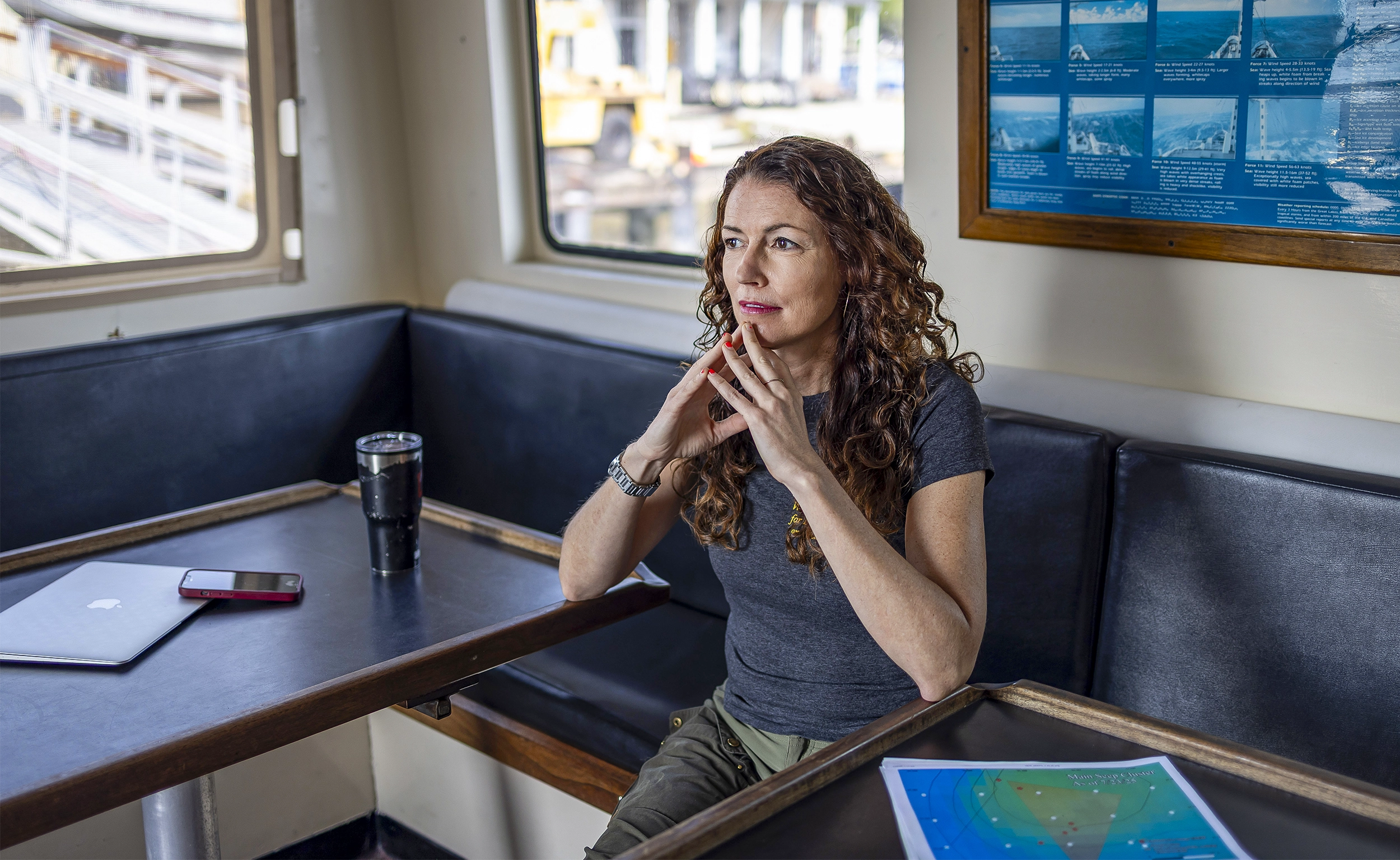
Lloyd’s research into long-lived microbes raises confounding questions. “Could you have an organism that is poised to change with an ice age in the same way that we have organisms that are poised to change with seasons?” she asked.
Monica Almeida for Quanta Magazine
Your work takes you to some very remote locations, including the seafloor. What is it like working down there?
Have you ever done something that is so exciting, but you know you can’t fully express your excitement? That’s what it was like all three times I have dived in a submersible. The whole process is very heightened; everything becomes significant and special.
The deepest I have gone is 2,000 meters, which is about a mile. You can only see what your lights are illuminating right in front of your submersible. You have to go really slowly because you could run into something and get stuck or damage your vehicle.
When you finally find the thing [you’re looking for], it’s a big elation. It depends on the mission as far as what the “thing” is. Sometimes you’re looking for a deep hole that’s drilled in the seafloor that you need to get samples out of. We have bottles sitting on the outside of the submersible and can trigger those to take a bottom-water sample. We also have a slurp gun that can slurp up small animals or water. We have cores on the front to collect mud.
Just finding your study site is a massive win.
How did you first get interested in studying the unknown worlds of microbes that live in sediments?
It started with my Ph.D. dissertation. I was pulling DNA sequences out of some estuary mud in North Carolina. The geochemistry that we were studying was dominated by methane production, and I was looking for organisms that deal with that. But what I caught was just a massive, massive amount of these other things. The vast majority of cells that were present, just in a normal estuary, had these really exotic new branches on the tree of life that nobody knew anything about.
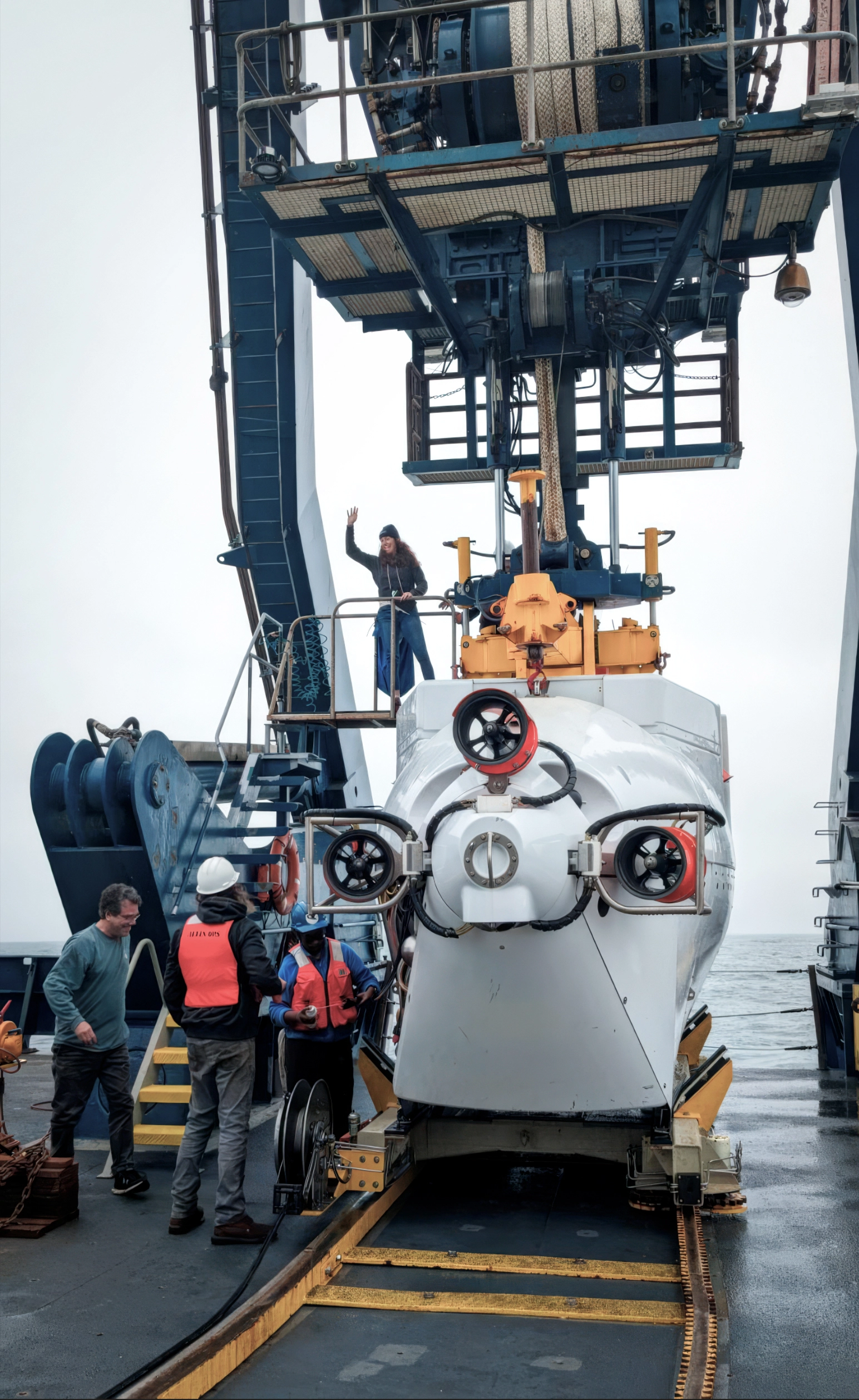
Lloyd and colleagues aboard the RV Atlantis, getting ready to dive in the Alvin submersible off the Oregon coast in August 2023. They were hunting for methane-eating extremophiles at seafloor methane seeps at a depth of 800 meters.
Ellen Lalk
I had a couple of job offers for my postdoc, and one of them was with Bo Barker Jørgensen at the Center for Geomicrobiology at Aarhus University in Denmark. He said, “You have free rein. I’m not going to dictate your project or what you do. The only thing I want is to find out something else about these crazy new types of life.”
The way to figure [that] out was to do single-cell genomics that hadn’t yet been done in sediments. We finally cracked it by pulling in somebody else, Ramunas Stepanauskas at the Bigelow Laboratory for Ocean Sciences [in Maine], who was willing to put our disgusting samples in his extremely expensive machine. The technology that Ramunas was pioneering [allowed you to] physically pull out individual living cells and put them by themselves in a tube. That was revolutionary. The problem is that any little piece of crud or dirt that gets into his finely tuned machine is going to cause the whole thing to break.
He just decided to throw caution to the wind and was like, “This is too big of a thing to pass up because if it works, it is really going to crack open a lot of new knowledge that we didn’t have before.” And he was right. I’m grateful to him for being brave enough to let us put our dirty, nasty samples into his instrument.
We were the first people to publish whole genomes of cells from marine sediments [in 2013]. We published four genomes. It’s really amusing now; I laugh with my students all the time. Technology has gone so far beyond that paper. My students will produce 400 genomes out of the same kind of sample. It’s fun to be part of a field that has just taken off.
Some of the microbes you have since studied are truly remarkable, including some that, as you put it, “breathe” rocks. Can you explain what you mean by that?
When I say “breathe” here, I am using it to mean the chemical process of what we do with air when we breathe it. When we bring air into our lungs, we use the oxygen in that air, and we reduce it — that means our enzymes inside our cells take electrons from our food and we basically put those electrons onto oxygen.
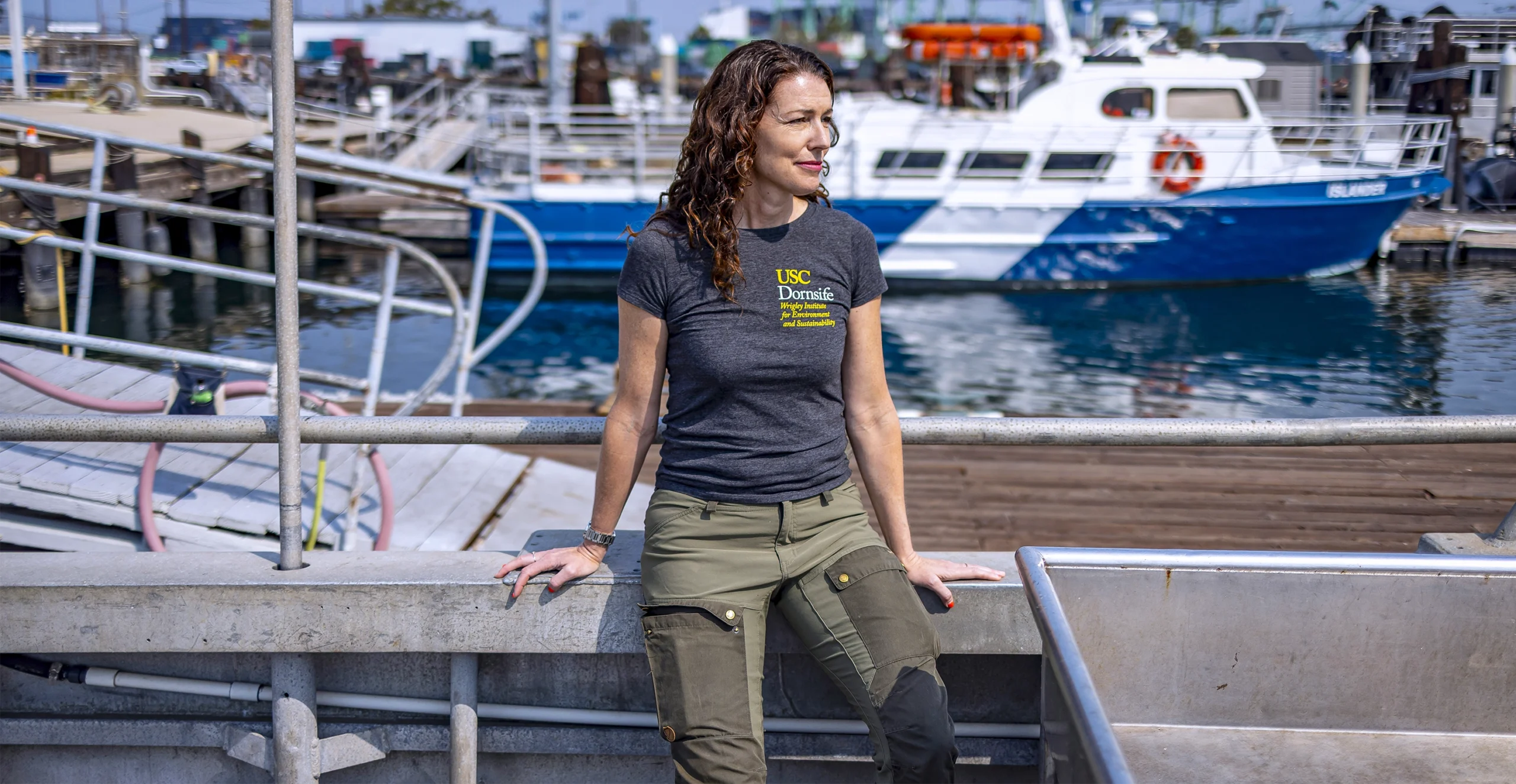
Lloyd’s research suggests that cells living in Earth’s subsurface can remain metabolically active for hundreds, thousands or even millions of years while rarely dividing.
Monica Almeida for Quanta Magazine
Because [oxygen is] the only thing that pretty much everything in the surface world breathes, we don’t even think about it. We use that word “breathe” to mean oxygen. But the microbial world can do much greater chemistry. You can literally keep a culture of bacteria that can use a solid form of iron and put it in a medium with iron-rich rocks, and it will breathe them.
For me, it is really fulfilling to know that life is actually far more varied and expansive than just the stuff that we can see.
In your book, you also describe microbes that may breathe in reverse. What does that mean?
If we find it thrilling and weird that life can breathe a rock, then I think it’s another level of thrilling and weird that life can breathe its waste products. It would be the equivalent of us finding the energy to run a marathon by making energy bars with our bodies.
In this case, the food and the waste products are all chemicals. I measure how much food there is, and how much product there is, and how those things balance out.
We can see that in certain types of marine sediments, the energy that [the microbes] could be getting in some cases goes in one direction, and then in other cases, just a few centimeters deeper in the sediment, the direction switches. The idea is that these are the same organisms, just behaving in a different way. That is the part that is still not agreed upon. That is consistent with everything I have seen, but I allow that it could be wrong.
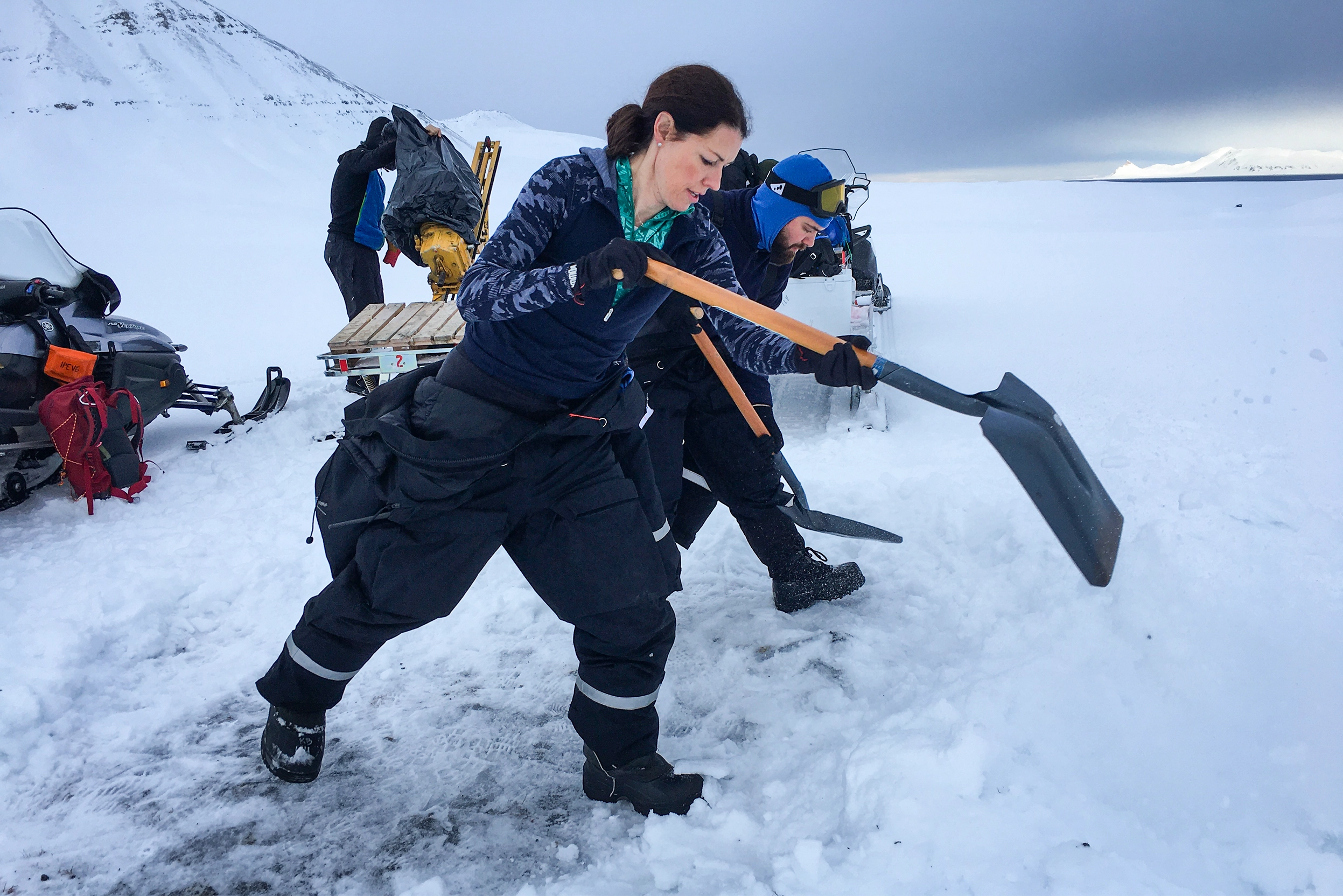
Lloyd and colleagues dig a snow pit in Ny Ålesund, Svalbard (79°N) to drill into permafrost and search for extremophiles capable of surviving in sub-zero temperatures.
Donato Giovannelli
It’s surprising because they would be the only organisms on Earth to do this. There are many metabolic processes that go in the forward direction and the reverse direction. That is something that life uses quite a bit just to be more efficient with our enzymes. But the idea that your respiration — what you breathe, what you get energy from — that you could, under different circumstances, get energy from running that reaction in reverse, that’s much more controversial.
The reason this is not fully accepted is that it is really hard to study. It’s hard to study things within the thermodynamic edge. It’s hard to be really certain that you have a pure culture.
How about the microbes that may live for thousands or millions of years? What do you know about those?
This is another inference, but all evidence points to the fact that a lot of these organisms just don’t experience enough energy at a rate fast enough to ever appreciably undergo cell division. Which is a little weird when you think about bacteria. The ones that make us sick grow fast. But the ones in the subsurface, deeply buried in places where not much happens, can’t [grow fast]. And so the implication of that is that individual cells can be alive for thousands of years, tens of thousands of years, maybe hundreds of thousands of years, without ever making a new cell. Just repairing broken parts, metabolizing, sending out conversational molecules to talk with their neighbors. Doing ecology, but not making a new cell and then dying.
You have to say, well, how do you evolve for that? We know that you can evolve to be dormant for a season because waiting a few months for the sun to come back to get energy, for plants, and food, for everybody else — that makes sense. But that is easy to think about because our lives are long enough to span that time.
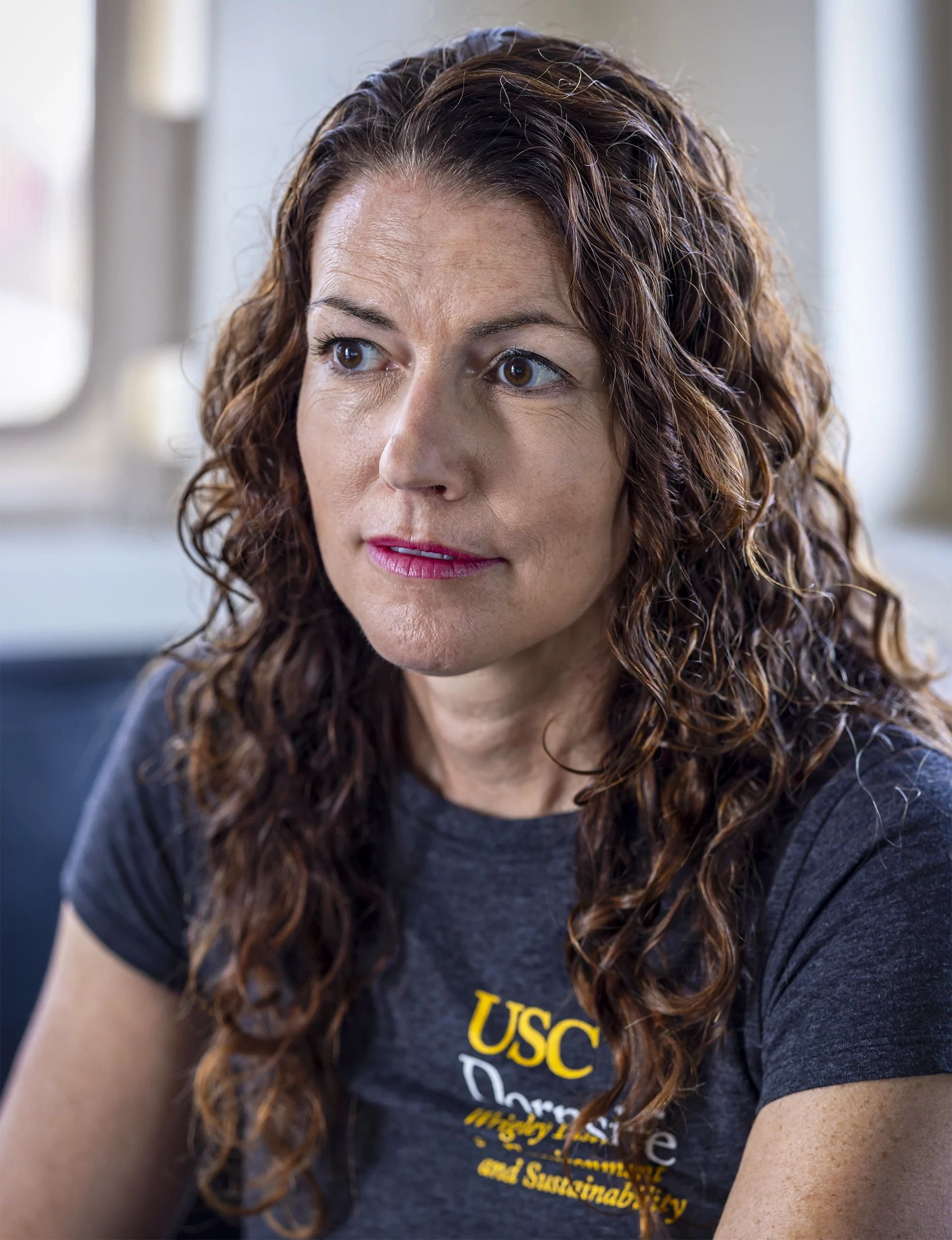
“It gives me comfort to know there are these silent beings underneath my feet who are just biding their time and waiting for a geological event,” Lloyd said.
Monica Almeida for Quanta Magazine
If your life was really, really long — if your life was 100,000 years — then that’s actually long enough to live through an ice age. So could you have an organism that is poised to change with an ice age in the same way that we have organisms that are poised to change with seasons? Our evidence points to that being a very plausible thing.
How does knowing about these life forms change the way you experience life?
It really changes how I look at the world. It gives me comfort to know there are these silent beings underneath my feet who are just biding their time and waiting for a geological event. And that’s not sad or scary. They are not dead. They are alive, and they are related to me on a deep branch on the tree of life, and that is just the way they are. I can’t say why that gives me a sort of peace and comfort, but it does.
What do we stand to lose if these subsurface environments are damaged by deep-sea mining?
We stand to lose all the things we haven’t discovered. That sounds like a throwaway statement, but that is a significant thing to say when you know that you have an environment with this many unknowns, and this much possibility. That is something we know for sure, that it is brimming with possibility. You don’t want to just plow through it and destroy it before you’ve fulfilled any of those possibilities.
What has your work taught you about the limits of life on Earth?
We have to keep our minds open to all of the surprising ways that life can exist, simply because that has been true over and over and over again: that if we allow ourselves to be free enough to look, there’s always something there.
Correction: August 26, 2025
This article was updated to state that single-celled microbes survive in rock 5 kilometers or more below Earth’s surface, not 8 kilometers as previously suggested.
